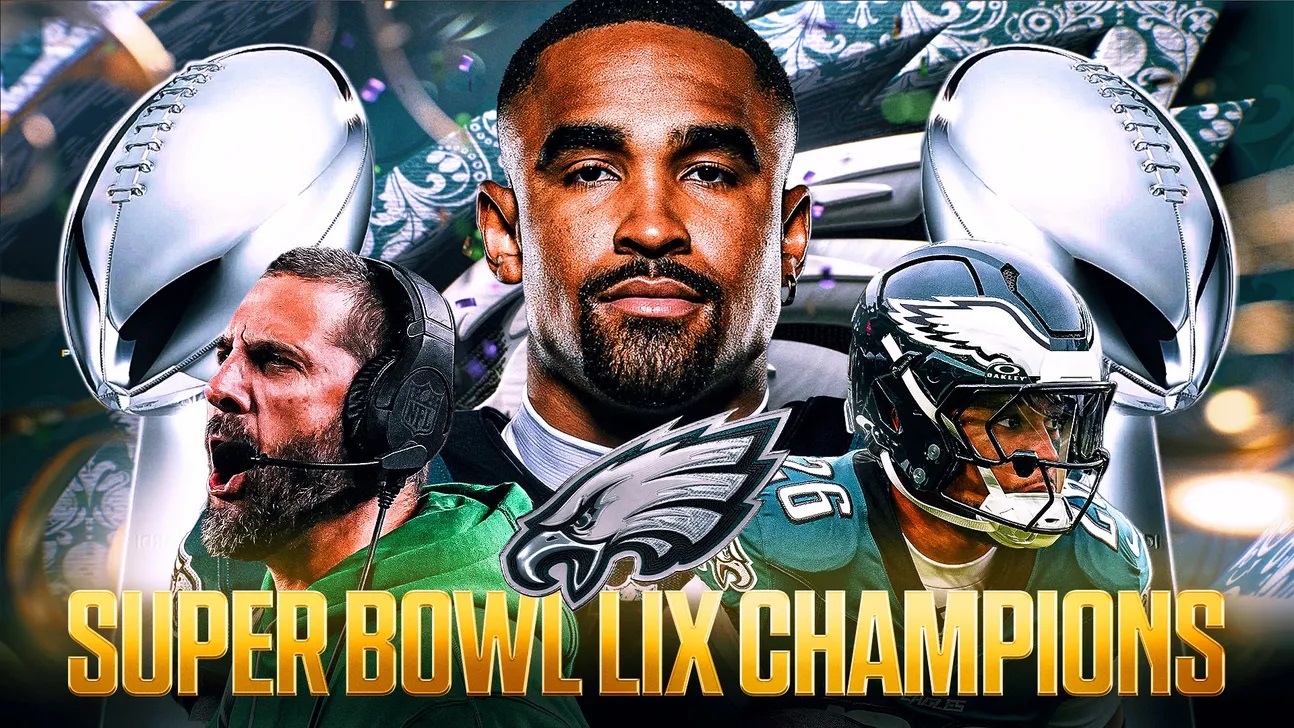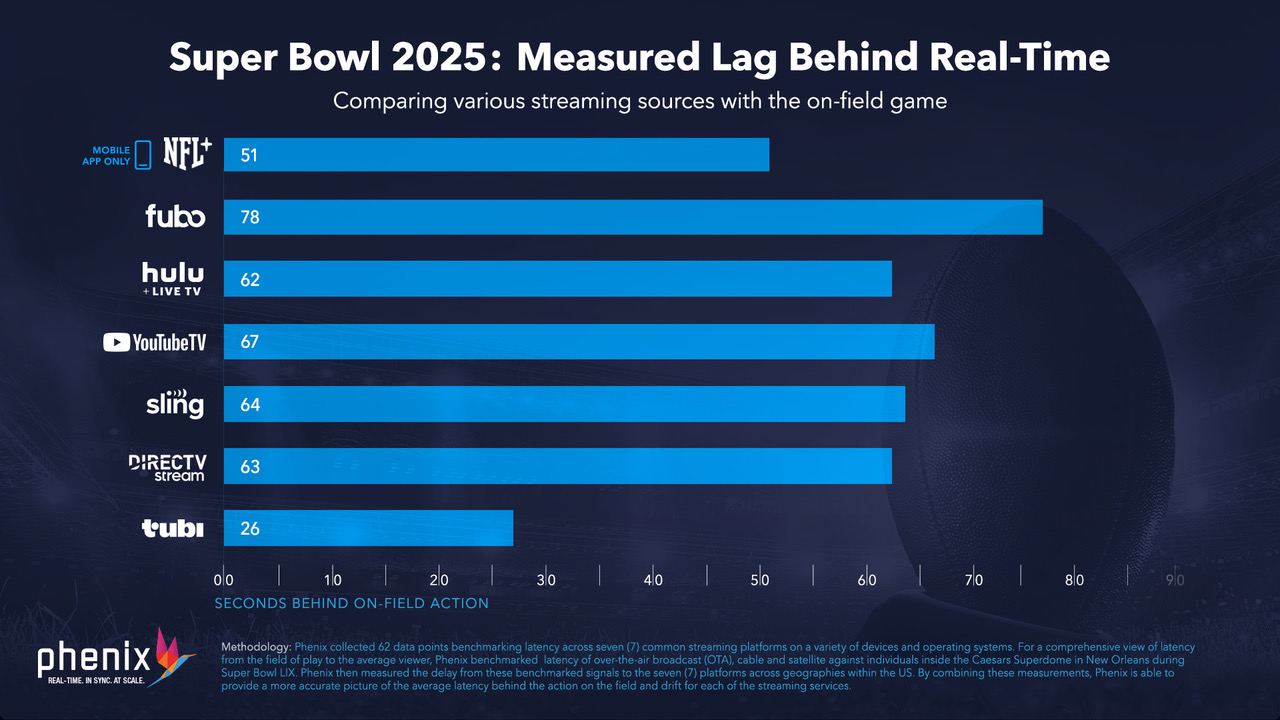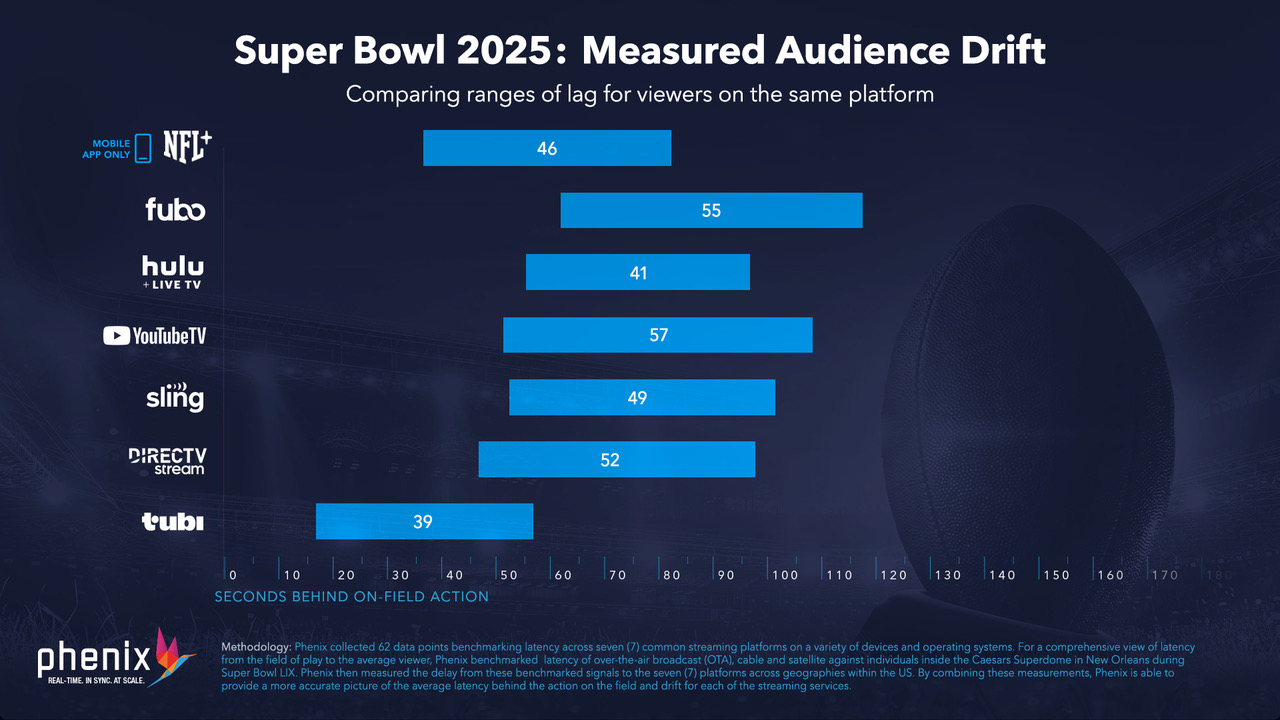Study: Super Bowl Streaming Delays Topped 60 Seconds on Many Platforms
Tubi had the best performance with 41 seconds of latency, according to Phenix

Latency remained an issue for those streaming the Super Bowl on Feb. 9, with streams on many platform lagging as much as 60 seconds behind the real-time game action, according to new data released by Phenix.
The Phenix data showed that Tubi did the best job at keeping up with the Philadelphia Eagles’ 40-22 rout of the Kansas City Chiefs, with an average latency of 41 seconds, followed by NFL+ (51 second lag), Hulu (62 seconds), DirecTV (63 seconds), Sling (64 seconds), YouTube TV (67 seconds) and Fubo (78 seconds).
“When we shared the results of our Super Bowl latency study back in 2023, I remember thinking then there was no excuse for delays and buffering, which honestly destroyed the viewing experience for fans during one of the biggest sporting events of the year,“ said Jed Corenthal, former NFL director of marketing and now chief marketing of Phenix.
(Read: Real-Time Streaming Gains Foothold In Sports Production, Online Betting)
“Unfortunately now, 728 days later, and I’m still saying the exact same thing. Fans are spending more than ever on way more services than they need to keep up with exclusivity rights and yet the experience on each continues to be subpar. My appeal to streaming platforms in 2025 is to please make the experience better for fans. I do believe this year is the tipping point, and many fans will cut the streaming cord if we don’t see progress.”

For the study, Phenix collected 62 data points benchmarking latency across seven common streaming platforms on a range of devices and operating systems. For a comprehensive view of latency from the field of play to the average viewer, Phenix benchmarked latency of over-the-air broadcast (OTA), cable and satellite against individuals inside the Caesars Superdome in New Orleans during the Super Bowl game. Phenix then measured the delay from these benchmarked signals to the seven platforms across various U.S. geographies. By combining these measurements, Phenix said, it is able to provide a more accurate picture of the average latency behind the action on the field and of drift for each of the streaming services.
The study also found a wide range in latency issues during the game.
Get the TV Tech Newsletter
The professional video industry's #1 source for news, trends and product and tech information. Sign up below.

“For the last six years, our Super Bowl latency study has uncovered one of the major issues holding back streaming from being the beacon we all expected when we cut the cord.” Phenix CEO Roy Reichbach said. “More than just being annoying for fans, the business implications around these latency issues are enormous. As a live event buffers or is over one minute behind what is actually happening on the field, things like real-time betting, second-screen viewing, peer interactions and live fan engagements cannot happen. These features are the future of sports viewing and sports culture. The playing field (pun intended) is uneven and each season we deny fans what they’re looking for, frustration grows and networks miss out on massive opportunities. Thankfully the technology exists to remove this barrier, we just have to stop being afraid to use it.”
George Winslow is the senior content producer for TV Tech. He has written about the television, media and technology industries for nearly 30 years for such publications as Broadcasting & Cable, Multichannel News and TV Tech. Over the years, he has edited a number of magazines, including Multichannel News International and World Screen, and moderated panels at such major industry events as NAB and MIP TV. He has published two books and dozens of encyclopedia articles on such subjects as the media, New York City history and economics.

